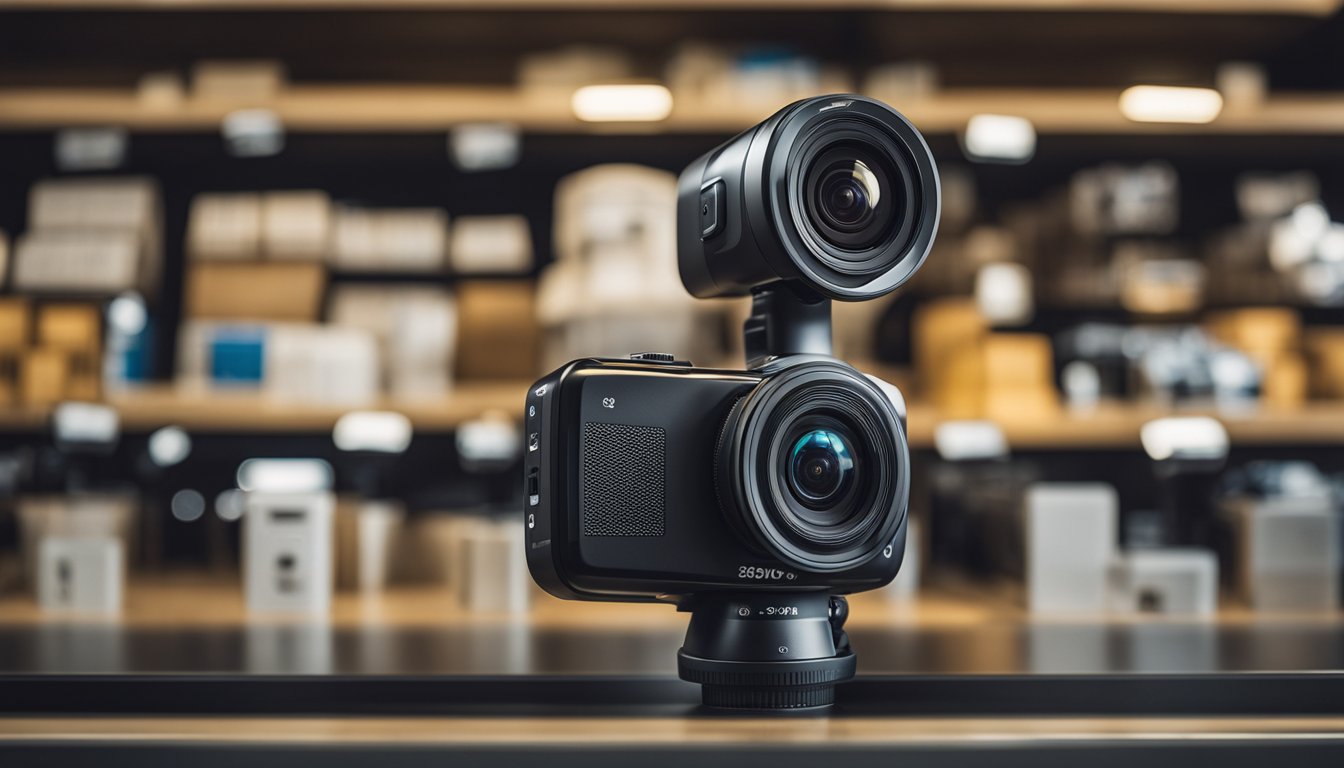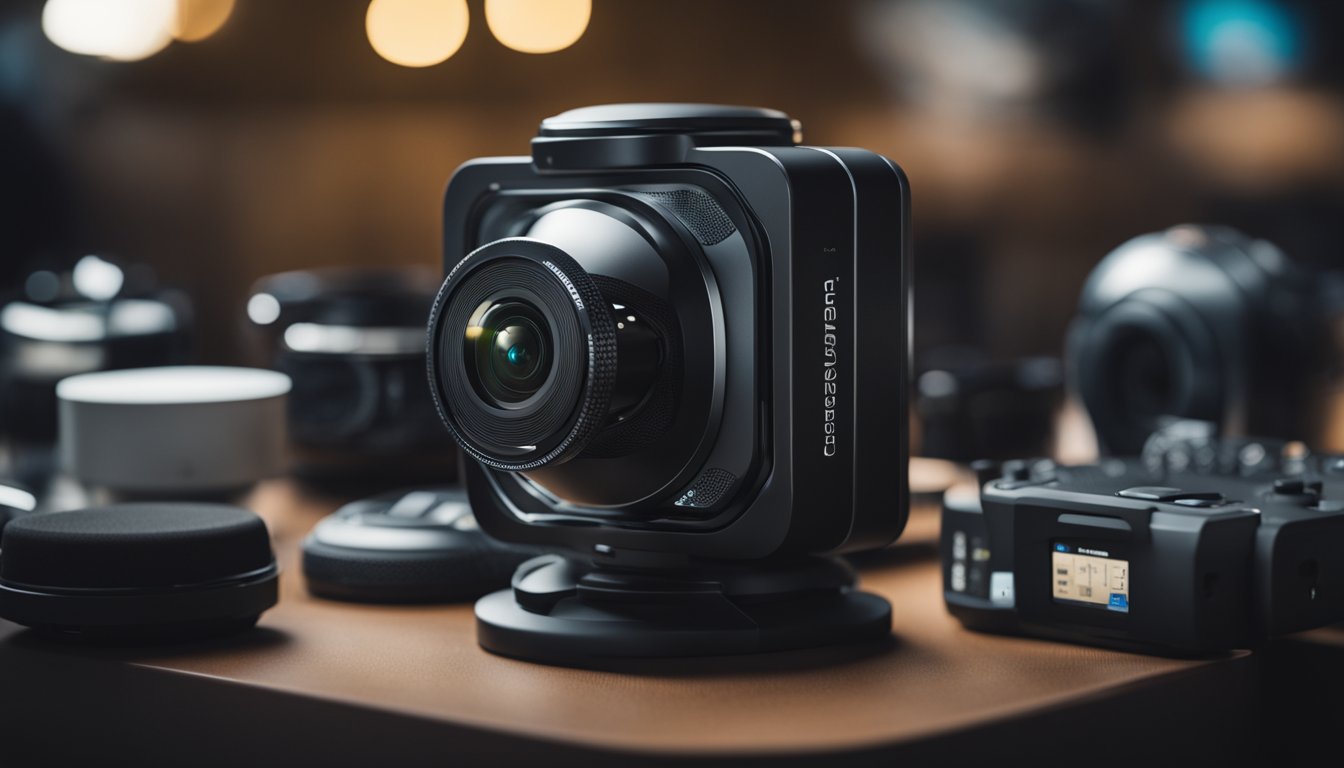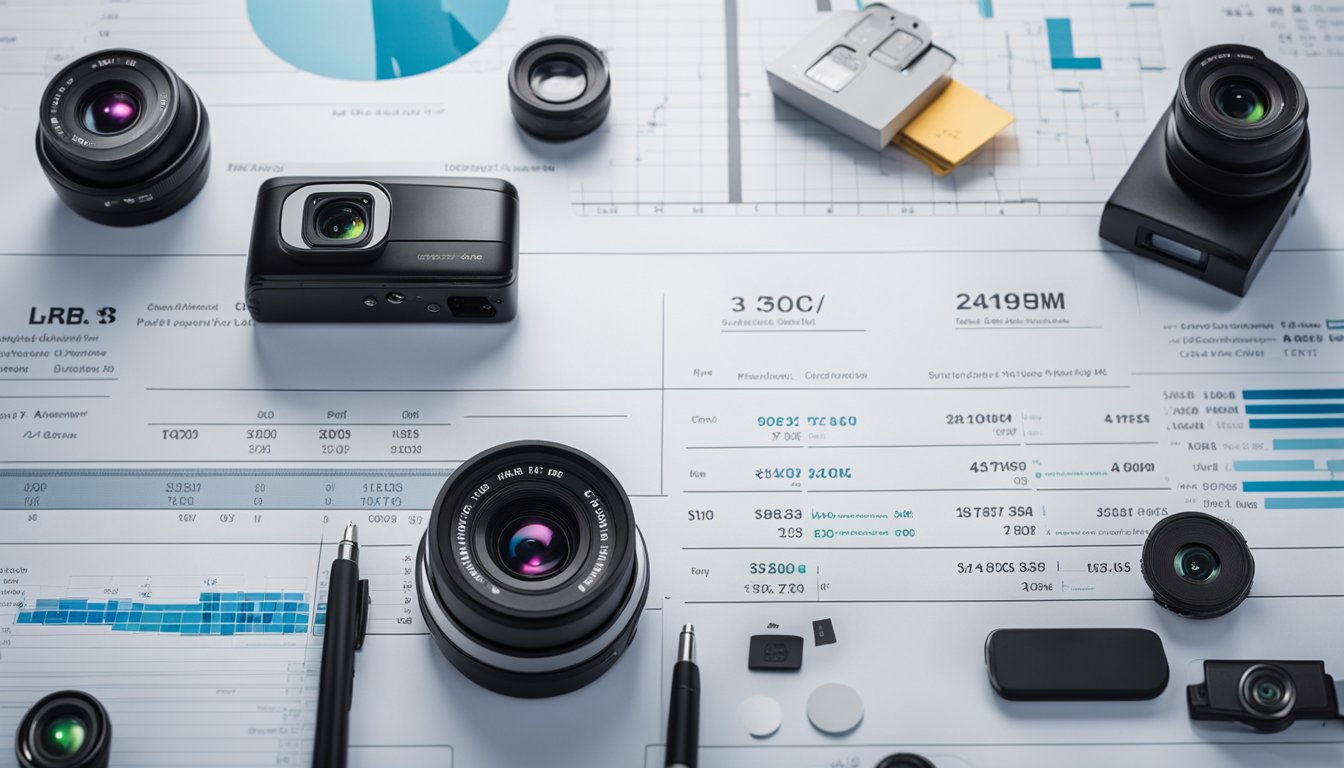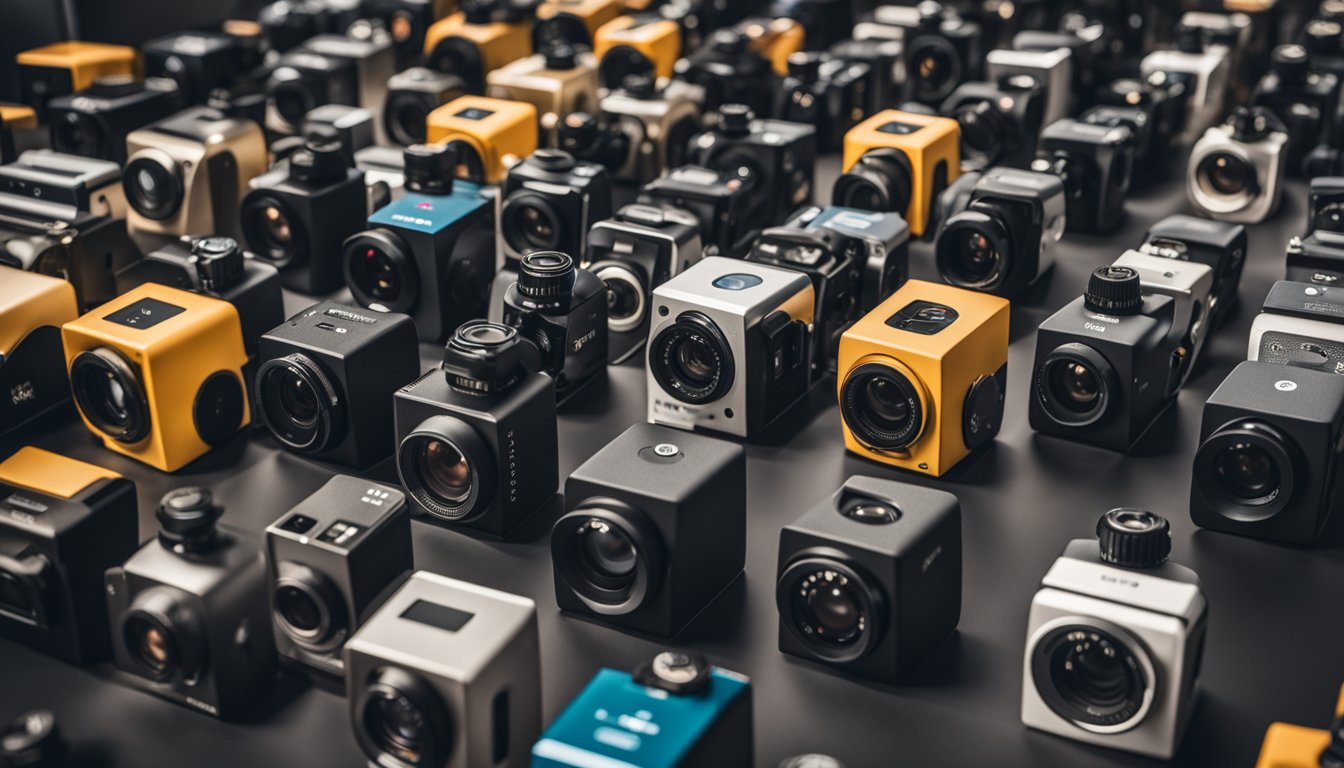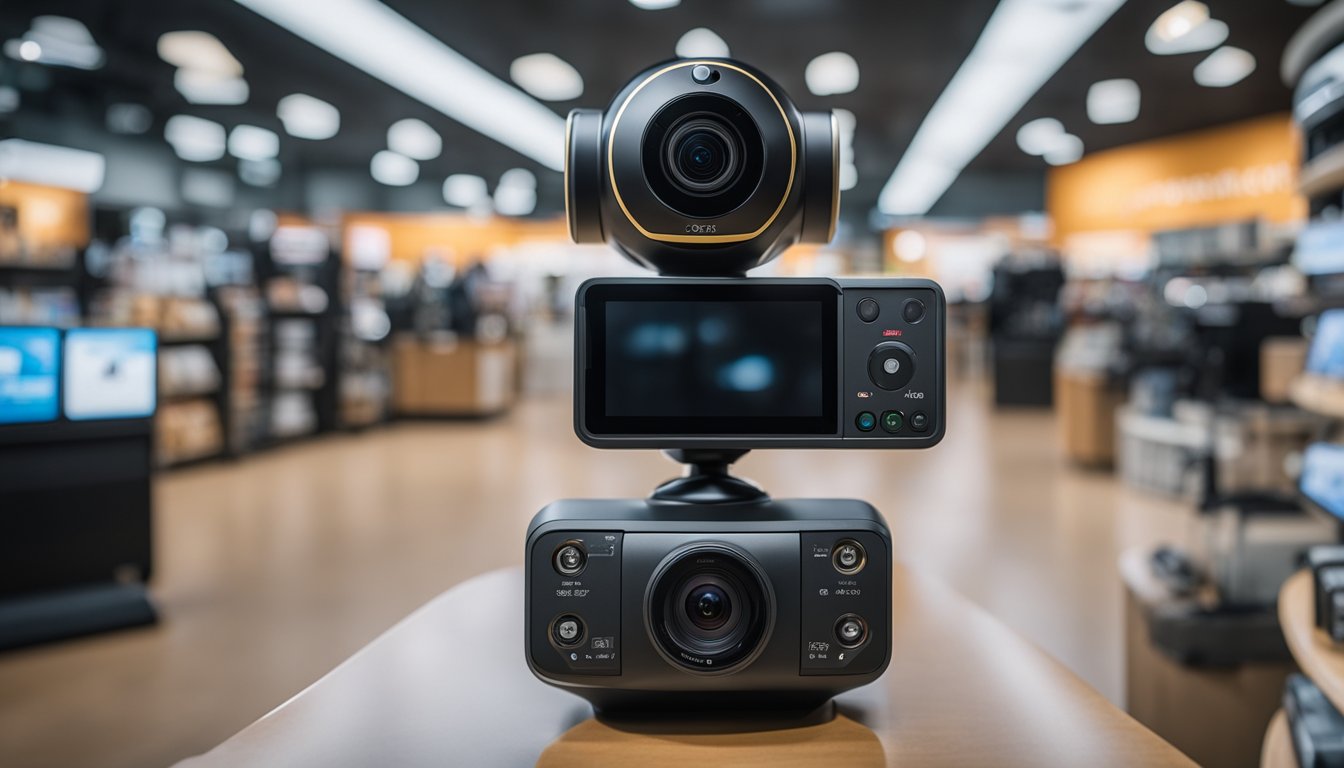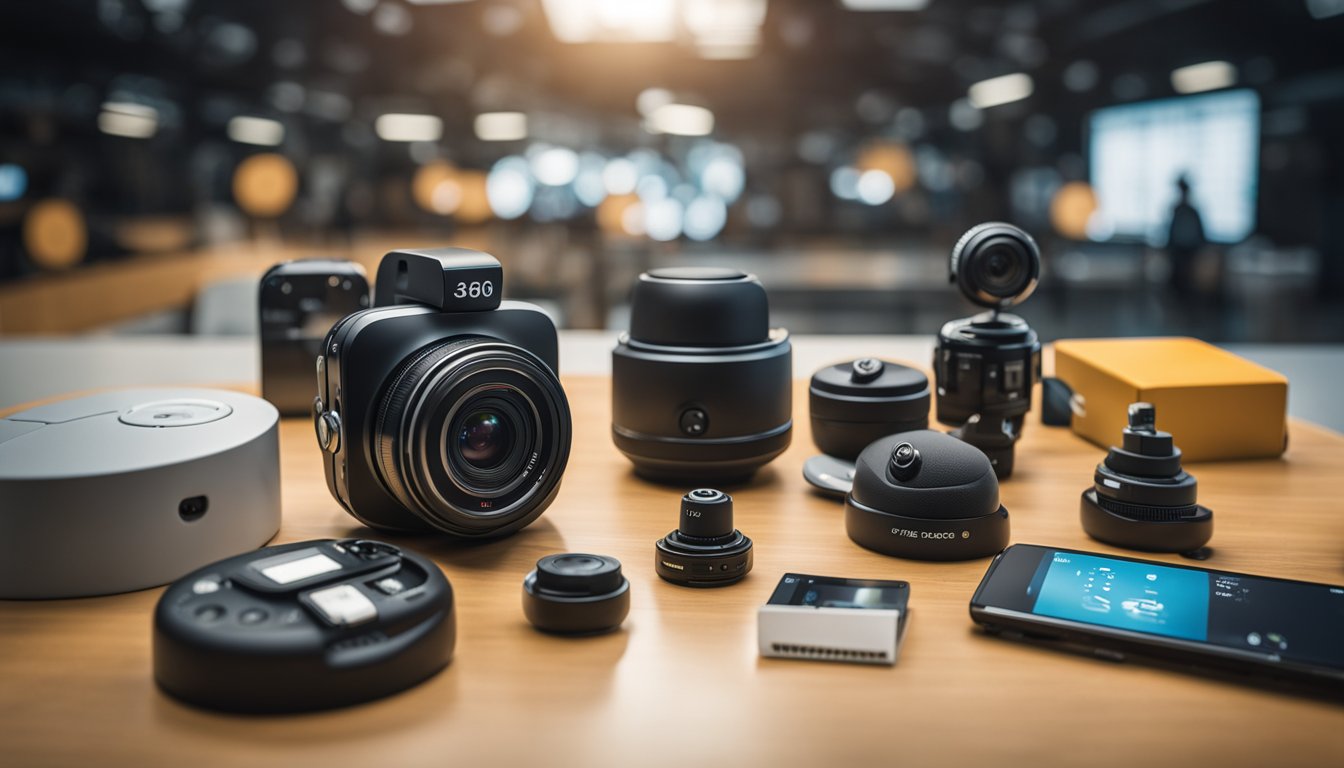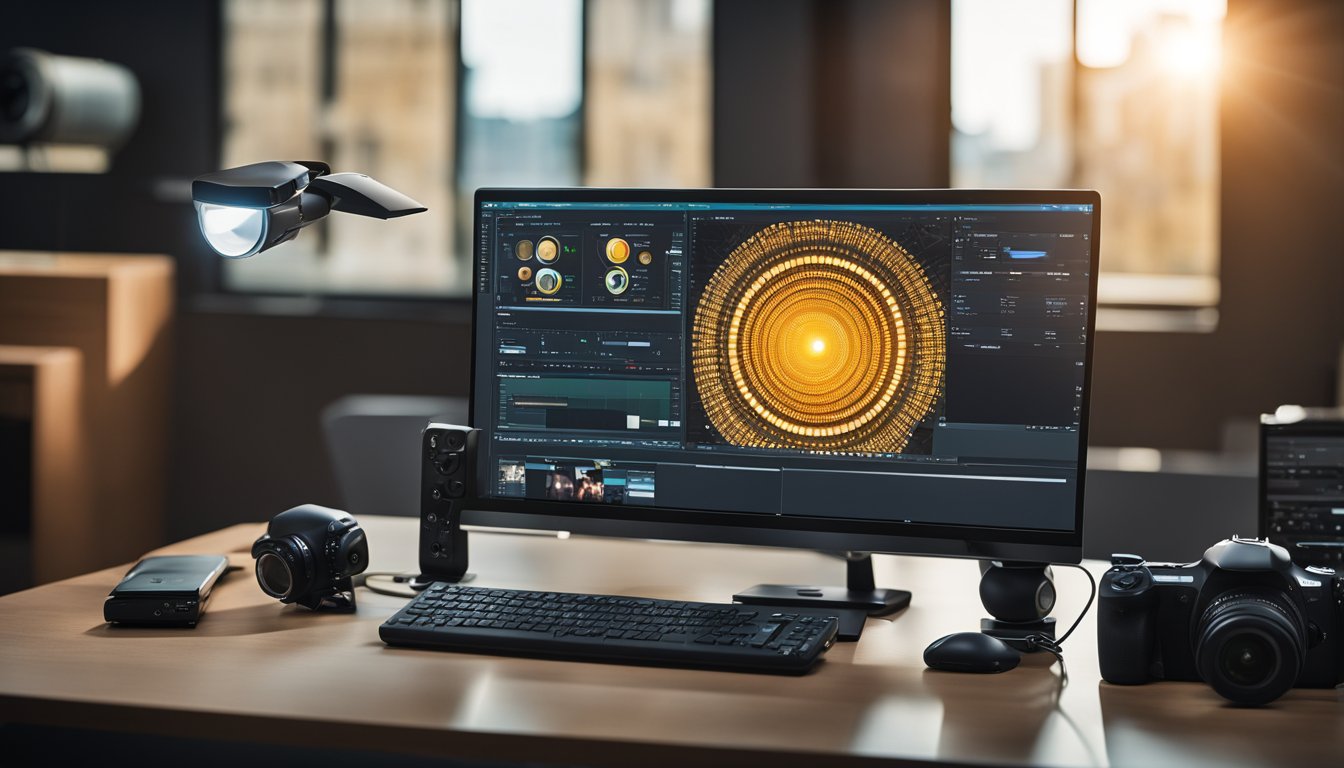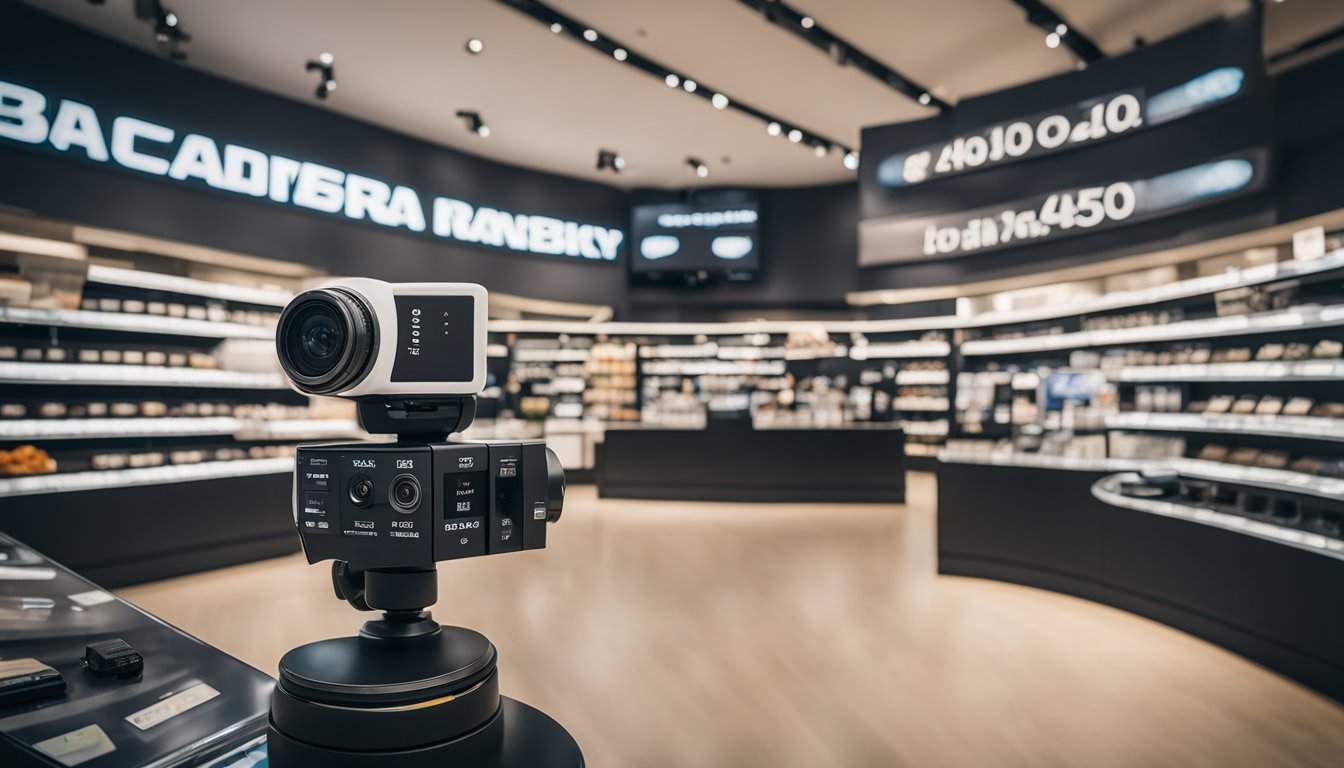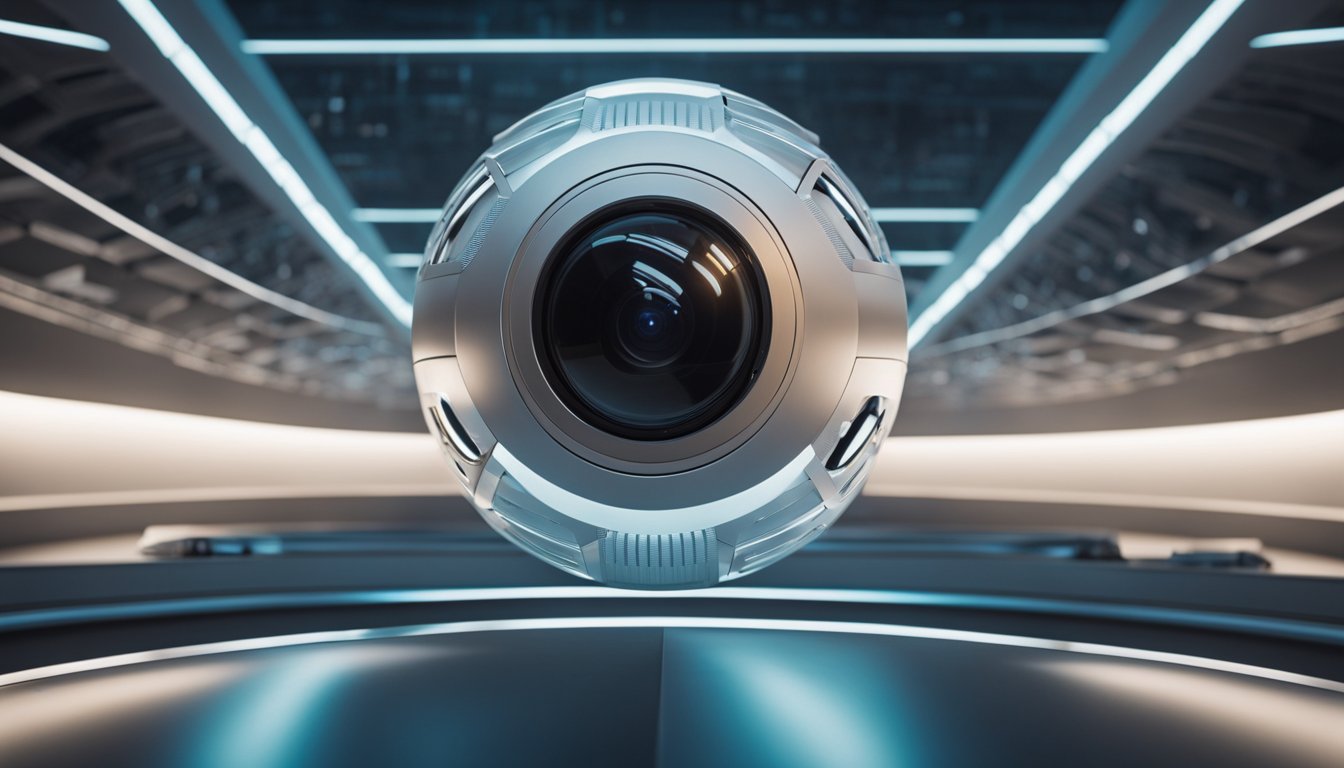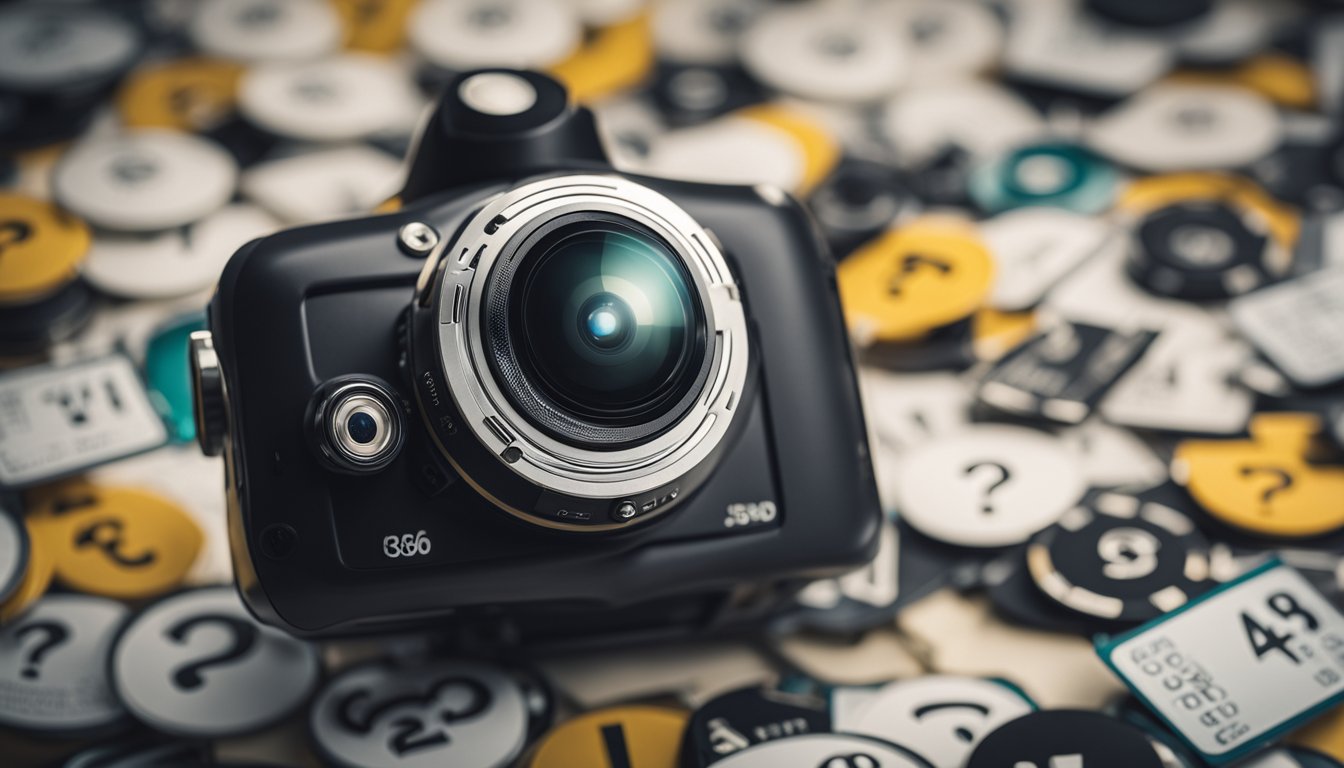If you’re looking to capture immersive photos and videos, 360 cameras are a great option. These cameras capture a full 360-degree view of your surroundings, allowing you to relive your memories in a unique way. However, before you invest in a 360 camera, you may be wondering how much they cost.
The cost of a 360 camera can vary depending on several factors, such as the camera’s specifications, performance, and additional features. Generally, entry-level 360 cameras can cost around $100 to $200, while high-end models can cost upwards of $1,000. However, there are also mid-range options available that can offer a good balance of features and affordability.
Key Takeaways
- The cost of a 360 camera can vary depending on several factors, such as the camera’s specifications, performance, and additional features.
- Entry-level 360 cameras can cost around $100 to $200, while high-end models can cost upwards of $1,000.
- Mid-range options can offer a good balance of features and affordability.
Understanding 360 Cameras
What Is a 360 Camera?
A 360 camera is a device that captures images or video in a 360-degree field of view. It uses multiple lenses to capture everything around the camera, allowing you to create immersive content that can be viewed in virtual reality (VR) or on a computer screen. 360 cameras are becoming increasingly popular for capturing stills and video due to their unique ability to capture an entire scene in one shot.
Key Features of 360 Cameras
When looking for a 360 camera, there are a few key features to consider. These include:
- Resolution: The resolution of the camera is important as it determines the quality of the final image or video. Higher resolution cameras will produce sharper, more detailed images and video.
- Stabilization: As 360 cameras capture everything around them, it can be difficult to keep the camera steady. Look for a camera with good stabilization to ensure that your footage is smooth and not shaky.
- Connectivity: Many 360 cameras can connect to your smartphone or computer via Wi-Fi or Bluetooth. This allows you to easily transfer your footage and control the camera remotely.
- Waterproofing: If you plan on using your 360 camera for outdoor activities, consider a camera that is waterproof. This will allow you to capture footage in wet conditions without damaging the camera.
Overall, 360 cameras are a great way to capture immersive content that can be viewed in virtual reality or on a computer screen. When looking for a camera, consider the resolution, stabilization, connectivity, and waterproofing to ensure that you get the best camera for your needs.

Factors Affecting the Cost of 360 Cameras
When it comes to buying a 360 camera, it’s essential to understand the factors that affect the cost. Here are a few things to consider before making your purchase.
Camera Quality and Resolution
The quality and resolution of the camera are significant factors that affect the cost of 360 cameras. Higher resolution cameras tend to be more expensive, but they also produce better quality images. For example, a camera with 5.7K resolution will be more expensive than a camera with 4K resolution.
Durability and Build Quality
Durability and build quality are also important factors to consider when purchasing a 360 camera. Some cameras are waterproof and can withstand harsh environments, making them ideal for outdoor activities. Cameras with better build quality are more durable and can last longer, but they may come at a higher cost.
Brand and Model
The brand and model of the camera can also affect the cost. Popular brands such as GoPro, Insta360, and Ricoh tend to be more expensive than lesser-known brands. However, they often come with more advanced features and better quality images.
« How Much Does a 360 Camera Cost? – A Comprehensive Guide to 360 Camera Pricing
360 Degree Camera for Vlogging: A Complete Guide to Choosing the Best One »
In conclusion, several factors affect the cost of 360 cameras. It’s essential to consider your needs and budget before making a purchase. By understanding these factors, you can make an informed decision and choose a camera that meets your requirements.
Price Range of 360 Cameras
If you are interested in purchasing a 360 camera, you may be wondering how much they cost. The price range of 360 cameras varies greatly depending on the features and quality of the camera. In this section, we will break down the price ranges of 360 cameras into three categories: budget-friendly options, mid-range cameras, and high-end professional cameras.
Budget-Friendly Options
If you are on a tight budget, there are several 360 cameras available that are affordable. These cameras typically cost between $100 and $300. While these cameras may not have all the features of more expensive models, they are a great option for those who are just starting out with 360 photography.
One example of a budget-friendly 360 camera is the Insta360 GO. This camera costs around $200 and is small enough to fit in your pocket. It has a 360-degree camera lens and can shoot 15-second videos or 100-frame photos.
Mid-Range Cameras
If you are looking for a 360 camera with more advanced features, you may want to consider a mid-range camera. These cameras typically cost between $300 and $600. They offer more advanced features such as higher resolution and better image stabilization.
One example of a mid-range 360 camera is the Ricoh Theta Z1. This camera costs around $600 and has two 1-inch sensors that can capture 23-megapixel stills and 4K video. It also has a built-in 4-channel microphone for high-quality audio.
High-End Professional Cameras
For professional photographers and videographers, high-end 360 cameras are available. These cameras typically cost over $1,000 and offer the highest quality and most advanced features.
One example of a high-end 360 camera is the Insta360 Pro 2. This camera costs around $4,500 and has six 200-degree lenses that can capture 8K resolution video. It also has advanced features such as real-time stitching and live streaming capabilities.
In conclusion, the price of 360 cameras varies greatly depending on the features and quality of the camera. If you are on a tight budget, there are several affordable options available. If you are looking for more advanced features, mid-range and high-end professional cameras are also available.
Camera Specifications and Performance
When it comes to choosing a 360 camera, you want to pay attention to the specifications and performance of the device. Here are some important factors to keep in mind.
Sensor Quality and Low Light Performance
The sensor size of a camera determines the quality of the image it captures. A larger sensor size usually means better image quality, especially in low light conditions. If you plan on using your 360 camera in low light environments, look for a camera with a larger sensor size.
Another important factor to consider is the low light performance of the camera. Some cameras have better low light performance than others, which means they can capture clearer images in dimly lit environments. If you plan on using your 360 camera indoors or at night, look for a camera with good low light performance.
Image Stabilization Technologies
360 cameras are notorious for producing shaky footage, but some cameras have image stabilization technologies that can help reduce shakiness. Look for cameras that have built-in stabilization technologies, such as optical or electronic image stabilization.
Optical image stabilization uses hardware to stabilize the image, while electronic image stabilization uses software. Some cameras have both technologies built-in for even better stabilization. Keep in mind that image stabilization can impact the overall image quality, so it’s important to find a balance between stabilization and image quality.
Overall, when it comes to camera specifications and performance, you want to find a camera that meets your specific needs. Consider factors such as sensor quality, low light performance, and image stabilization technologies to find a camera that will capture the best possible images and videos.
Additional Features and Accessories
When purchasing a 360 camera, it is important to consider the additional features and accessories that come with it. These can greatly enhance your overall experience and allow you to capture stunning footage in a variety of settings.
Waterproof Capabilities
If you plan on using your 360 camera for outdoor activities such as snorkeling or surfing, you may want to consider a model with waterproof capabilities. Some cameras are designed to be fully submersible, while others may require a separate waterproof housing. Be sure to check the depth rating and make sure it meets your needs before making a purchase.
Modular Design and Lenses
Modular design and interchangeable lenses can be a great way to customize your camera to fit your specific needs. Some cameras allow you to swap out lenses for different focal lengths, while others may have modular designs that allow you to add accessories such as external microphones or lights. This can be especially useful if you plan on using your camera for professional or creative projects.
Other features to consider include a touchscreen interface for easy navigation, compatibility with tripods and selfie sticks for stable shots, and built-in image stabilization for smooth footage. By taking the time to research and compare different models, you can find a 360 camera that fits your needs and budget while still providing the features and accessories you need to capture stunning footage.
Software and Editing Tools
When it comes to editing your 360 photos and videos, there are a variety of software and editing tools available. In this section, we will cover desktop software and mobile apps that are compatible with 360 cameras.
Desktop Software
Desktop software is a popular choice for editing 360 photos and videos. There are many options available, ranging from free to paid. Some popular options include:
- Adobe Premiere Pro: This is a professional-grade video editing software that is widely used in the film and television industry. It is a paid software, but it offers a comprehensive set of tools for editing 360 videos.
- Final Cut Pro X: This is a video editing software that is only available for Mac users. It is a paid software, but it offers a user-friendly interface and a range of tools for editing 360 videos.
- Pinnacle Studio: This is a video editing software that is available for both Windows and Mac users. It offers a range of tools for editing 360 videos, including the ability to add 360-degree titles and effects.
Mobile Apps and Compatibility
If you prefer to edit your 360 photos and videos on your mobile device, there are several apps available that are compatible with 360 cameras. Some popular options include:
- V360: This is a free app that is available for both iOS and Android users. It offers a range of editing tools, including the ability to add filters and text overlays.
- Insta360: This is a free app that is available for both iOS and Android users. It is designed specifically for use with Insta360 cameras, but it offers a range of editing tools for 360 photos and videos.
- Google Street View: This is a free app that is available for both iOS and Android users. While it is primarily designed for creating 360-degree photos for Google Maps, it also offers basic editing tools for 360 photos and videos.
When choosing software and editing tools for your 360 photos and videos, it is important to consider your level of experience and the features you require. While professional-grade software may offer a comprehensive set of tools, it may also have a steep learning curve. On the other hand, mobile apps may be more user-friendly, but they may not offer the same level of functionality as desktop software.
Use Cases and Applications
360 cameras have a wide range of applications, from virtual tours to action sports. Here are some of the most common use cases for 360 cameras and how they are being used today.
Virtual Tours and Real Estate
360 cameras are perfect for creating virtual tours of real estate properties. With a 360 camera, you can capture every angle of a room and provide potential buyers with a complete view of the property. This is especially useful for remote buyers who are unable to visit the property in person. 360 cameras can also be used to create virtual tours of museums, art galleries, and other cultural institutions.
Action Sports and Adventure
360 cameras are also popular among extreme sports enthusiasts. With a 360 camera, you can capture every moment of your adventure, from skiing down a mountain to surfing a wave. 360 cameras are also great for live streaming events, allowing viewers to experience the action in real-time.
Overall, 360 cameras are a versatile tool that can be used in a variety of applications. Whether you are a real estate agent looking to create virtual tours or an extreme sports enthusiast looking to capture your adventures, a 360 camera is a great investment.
Connectivity and Sharing
https://www.youtube.com/watch?v=k4ibva4PS_Q&embed=true
When it comes to 360 cameras, connectivity and sharing features are crucial. You want to be able to easily transfer your footage to your phone or computer and share it with your friends and family. Here are some things to consider:
Wi-Fi and Live Streaming
Most 360 cameras come with Wi-Fi connectivity, which allows you to transfer your footage wirelessly to your phone or computer. Some cameras even come with live streaming capabilities, which means you can stream your footage directly to platforms like YouTube and Facebook. This is a great feature if you want to share your experiences with your friends and family in real-time.
Social Media Integration
If you’re planning on sharing your 360 footage on social media, it’s important to make sure that your camera has social media integration. This means that you can easily upload your footage to platforms like YouTube and Facebook directly from your camera or mobile device. Some cameras even come with built-in editing tools, so you can edit your footage before you upload it.
Overall, connectivity and sharing features are important considerations when choosing a 360 camera. Make sure to choose a camera that has Wi-Fi connectivity, live streaming capabilities, and social media integration if you plan on sharing your footage online.
Choosing the Best 360 Camera
https://www.youtube.com/watch?v=k_xGcuy4_fs&embed=true
If you’re in the market for a 360 camera, you’re probably wondering how much they cost and which one is the best for you. With so many options available, it can be difficult to know where to start. In this guide, we’ll take a look at some of the top picks for different needs and provide some tips for making an informed decision.
Top Picks for Different Needs
When it comes to choosing the best 360 camera, there are a few things to consider. Some cameras are better suited for beginners, while others are more advanced and offer more features. Here are some top picks for different needs:
-
Best for Beginners: The Insta360 ONE X2 is a great camera for beginners. It’s easy to use, has a simple interface, and offers high-quality footage. It’s also affordable, making it a great choice for those who are just starting out.
-
Best for Action: If you’re looking for a camera that can handle extreme sports and action shots, the GoPro MAX is a great choice. It’s durable, waterproof, and can capture high-quality footage in even the toughest conditions.
-
Best for Professionals: The Kandao QooCam 8K is a professional-grade camera that offers high-quality footage and advanced features. It’s perfect for filmmakers and content creators who need the best possible quality and features.
Making an Informed Decision
When choosing a 360 camera, there are a few things to keep in mind. Here are some tips to help you make an informed decision:
-
Consider your needs: Think about what you’ll be using the camera for and what features are important to you.
-
Set a budget: 360 cameras can range in price from a few hundred dollars to several thousand dollars. Set a budget and stick to it.
-
Read reviews: Read reviews from other users to get an idea of the camera’s performance and reliability.
-
Check the specs: Look at the camera’s specifications to ensure it has the features you need.
By keeping these tips in mind and choosing a camera that meets your needs, you can find the perfect 360 camera for you.
Future of 360 Cameras
As technology continues to advance, the future of 360 cameras looks bright. With more and more people becoming interested in immersive content, 360 cameras are likely to become more popular in the coming years. In this section, we will explore some of the advancements in technology and trends in immersive content that are likely to shape the future of 360 cameras.
Advancements in Technology
One of the biggest advancements in 360 camera technology is the development of higher resolution cameras. As camera sensors become more advanced, 360 cameras are able to capture higher quality images and videos. This means that immersive content will become even more realistic and engaging.
Another area of advancement is the development of more compact and portable 360 cameras. As the technology becomes more mainstream, manufacturers are looking for ways to make the cameras more accessible to a wider audience. This means that we are likely to see more affordable and user-friendly 360 cameras in the future.
Trends in Immersive Content
As immersive content becomes more popular, we are likely to see new trends emerge. One trend that is already gaining traction is the use of 360 cameras for live streaming. This allows viewers to experience events in real-time, as if they were actually there.
Another trend is the use of 360 cameras for virtual tours. This is particularly useful for businesses in the real estate and travel industries, as it allows potential customers to experience a property or destination before they make a purchase.
Overall, the future of 360 cameras looks bright. With advancements in technology and new trends in immersive content, we are likely to see more and more people embracing this exciting new technology.
Frequently Asked Questions
What’s the price range for entry-level 360 cameras?
Entry-level 360 cameras are available in a wide range of prices, starting from around $100. These cameras are suitable for beginners who want to try their hand at 360-degree photography and videography without spending too much money. However, keep in mind that entry-level cameras may have limited features and lower image quality compared to mid-range or high-end cameras.
Can you recommend a budget-friendly 360 camera for parties?
If you’re looking for a budget-friendly 360 camera for parties, the Insta360 One X2 is a great option. Priced at around $430, this camera is easy to use and captures high-quality 360-degree photos and videos. It also comes with a range of features such as automatic horizon leveling, image stabilization, and slow-motion video recording.
What are the costs associated with a professional 360 camera for real estate?
Professional 360 cameras for real estate can range from $3,000 to $10,000 or more. These cameras are designed for high-quality image and video capture, and come with features such as HDR imaging, 3D scanning, and virtual tour creation software. Keep in mind that additional costs such as tripod, memory cards, and software may also be required.
How much should I expect to spend on a 360 camera for creating virtual tours?
If you’re looking to create virtual tours with a 360 camera, you can find cameras in the mid-range price point of $500 to $1,500. These cameras come with features such as high-resolution image and video capture, image stabilization, and easy-to-use editing software. However, keep in mind that additional costs such as tripod, memory cards, and software may also be required.
Is investing in a 360 camera booth a cost-effective choice?
Investing in a 360 camera booth can be a cost-effective choice if you plan to use it frequently for events or business purposes. The cost of a 360 camera booth can range from $5,000 to $20,000 or more, depending on the size and features of the booth. However, keep in mind that additional costs such as transportation, setup, and maintenance may also be required.
What are the expenses for setting up a 360 action camera system?
Setting up a 360 action camera system can vary in cost depending on the specific equipment and accessories you choose. You can expect to spend anywhere from $500 to $2,000 or more for a complete setup, including cameras, mounts, and accessories. Keep in mind that additional costs such as memory cards and editing software may also be required.

